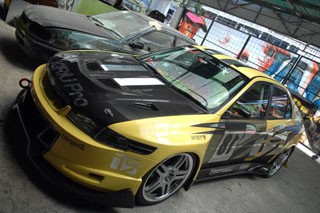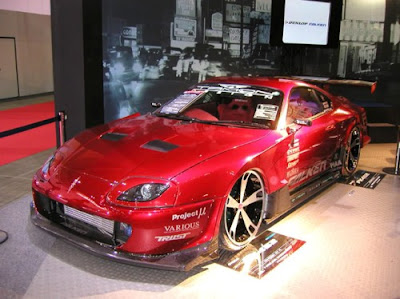 (Updated) These are the first official photos of the MINI E, an all-electric version of the MINI Cooper that will make its first public appearance at the Los Angeles Auto Show in mid-November. What's so important about this MINI -aside from its technical specs- is that over the next year or so, BMW will produce around 500 units which will be leased to selected private and corporate customers in the U.S. states of California, New York and New Jersey, giving the Bavarian automaker the chance to evaluate the viability of a full-scale production EV. MINI said that it also considering the possibility of leasing the vehicle in Europe.
(Updated) These are the first official photos of the MINI E, an all-electric version of the MINI Cooper that will make its first public appearance at the Los Angeles Auto Show in mid-November. What's so important about this MINI -aside from its technical specs- is that over the next year or so, BMW will produce around 500 units which will be leased to selected private and corporate customers in the U.S. states of California, New York and New Jersey, giving the Bavarian automaker the chance to evaluate the viability of a full-scale production EV. MINI said that it also considering the possibility of leasing the vehicle in Europe. The MINI Es will be built at the firm's Oxford plant in the U.K. without engines and transmissions, then shipped to BMW's headquarters in Munich, Germany where they will be fitted with an electric powertrain. The electric motor is powered by a lithium-ion battery that has been placed in the position of the rear seat bench - yep, it's is a two-seater. -Continued
The battery can be fully charged through a standard outlet in about eight hours. However, MINI will offer each buyer a wallbox with higher amperage that will be installed in the customer's garage enabling a full recharge in just 2 1/2 hours. The MINI E also features a brake regeneration system that transforms kinetic energy to electricity replenishing the battery. According to BMW Group officials, the lithium battery offers the MINI E a driving range of more than 240km or 150 miles.
Weighing at 1,456 kg or 3,230 lbs, the MINI E is now lightweight champion. However, the electric motor compensates for the extra weight by producicng an impressive output of 204HP (150kW) and a peak torque of 220Nm which is good enough to accelerate the "electrifying MINI" from standstill to 100km/h (62mph) in 8,5 seconds. The vehicle's top speed is electronically limited to 152 km/h (95mph).
On the outside and apart from the absence of an exhaust pipe(s), the MINI E is distinguished by the bright yellow decals on the rooftop and a stylish logo depiciting an electric plug that makes its appearance on the hood, the roof, the fuel-cap which now hosts an electric socket, and on the rear door.
The two-tone grey-yellow color scheme is continued in the vehicle's interior. The only differences between the 'E' and its conventional siblings in the cabin is the battery level indicator behind the steering wheel that replaces the MINI's rev counter and the absence of the rear seat bench.























